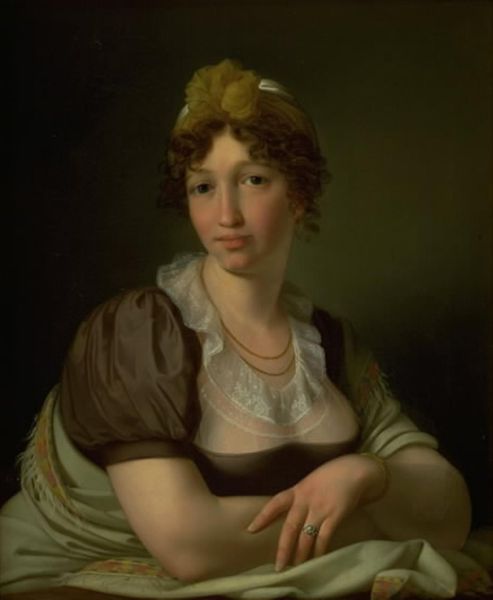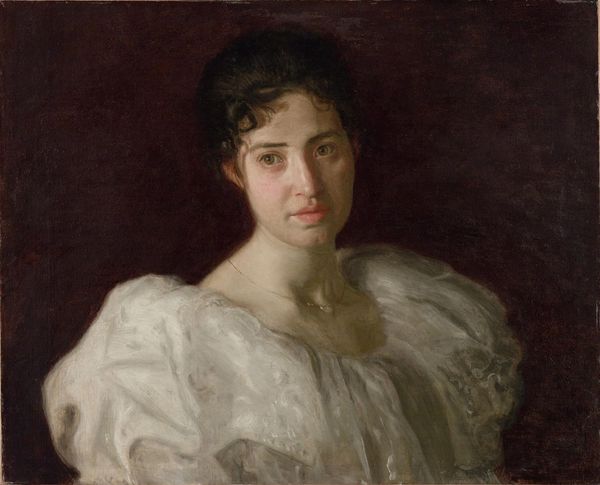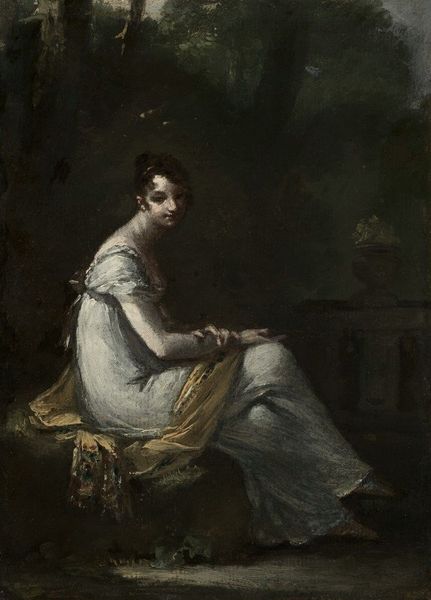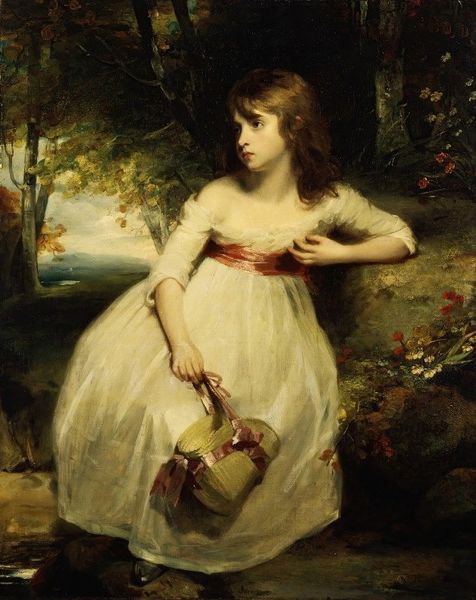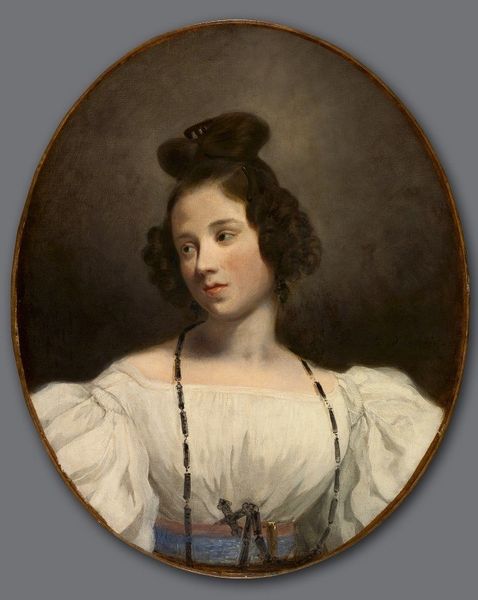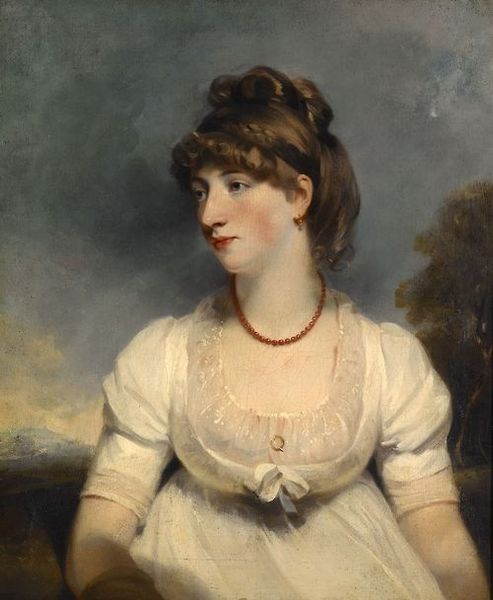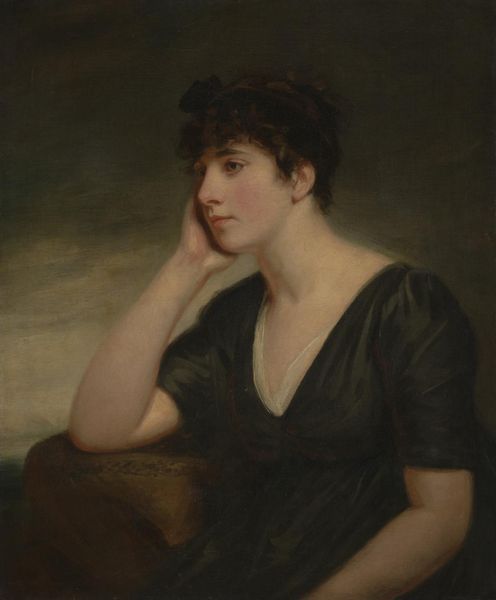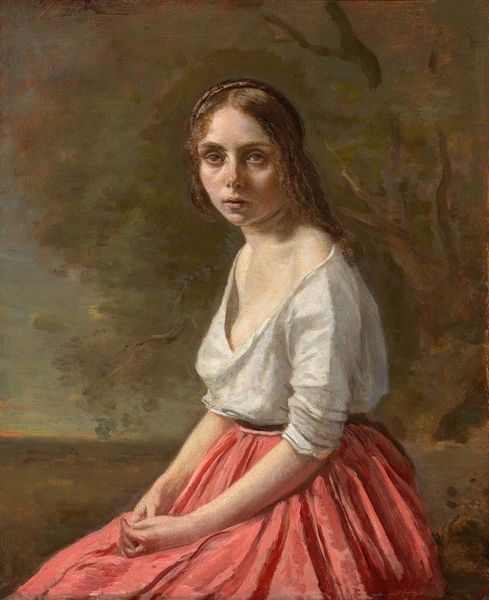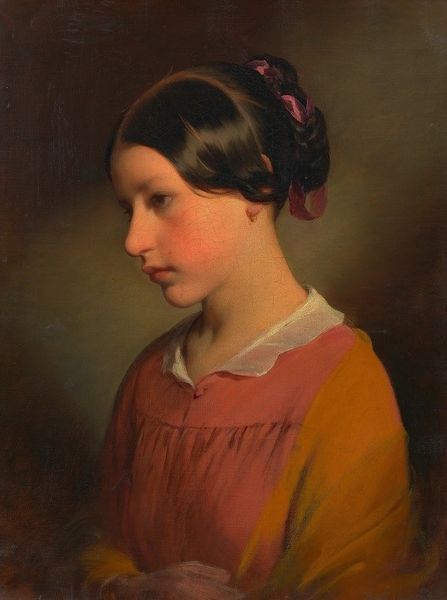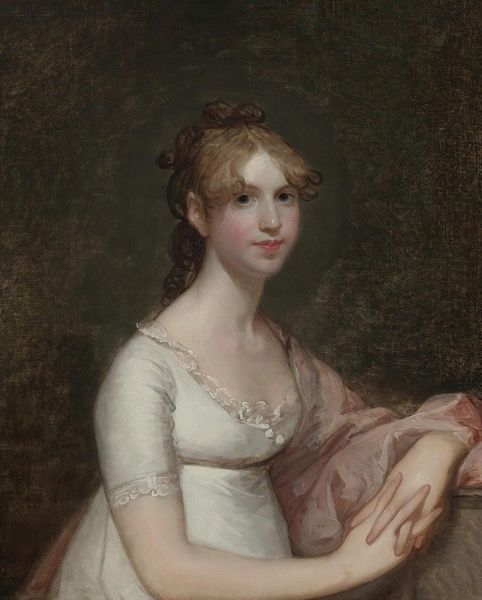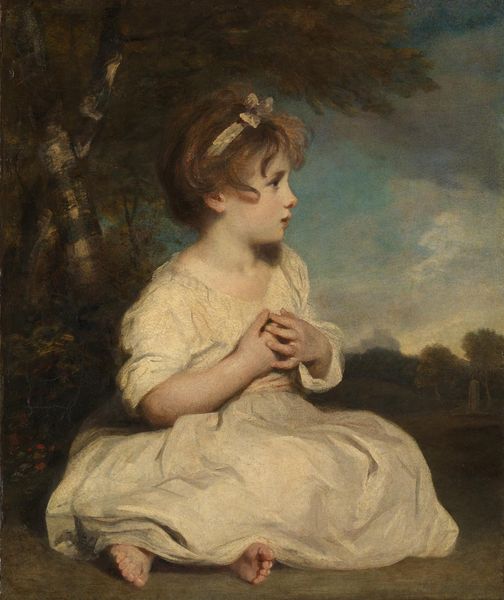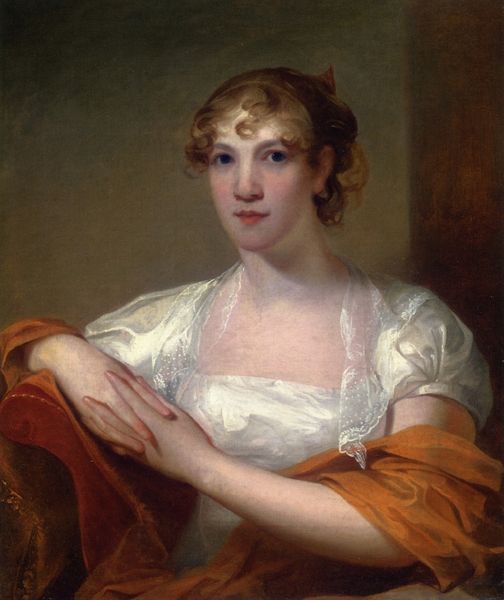
painting, oil-paint
#
portrait
#
figurative
#
portrait
#
painting
#
oil-paint
#
figuration
#
romanticism
#
portrait drawing
#
portrait art
Copyright: Public Domain: Artvee
Editor: Here we have John Constable’s portrait of “Mary Freer,” painted in 1809. The subject’s direct gaze and slightly flushed cheeks give the piece a sense of intimate immediacy, even though the palette is fairly subdued. What do you see in this portrait, especially considering the period it was created? Curator: What I find most compelling about this painting is how it challenges conventional portraiture of the time. While clearly commissioned, it avoids the overt displays of wealth and status so common in portraits of the early 19th century. Note the almost deliberately simple dress and lack of jewelry. Doesn't it strike you as almost…democratic in its sensibility? Editor: Democratic? How so? It seems that a portrait, even a simple one, was still a privilege only the upper classes could afford. Curator: Precisely. While the portrait itself is a marker of social standing, Constable seems to be subtly undermining the established visual language of class. Think about the rise of Romanticism. Artists were starting to prioritize emotion and the individual experience, leading to shifts in patronage and artistic values. A simpler presentation could speak to "authenticity." Do you think this approach influenced its reception, or even Constable's career? Editor: That’s fascinating! It’s almost as if Constable is navigating a tension between the traditional role of portraiture and a new desire for something more…genuine. I wonder how Miss Freer herself felt about it? Curator: A vital question. We must remember these images are not neutral; they are shaped by the social contract between artist, sitter, and audience. By examining the artistic choices within their historical framework, we uncover fascinating insights into evolving cultural values. Editor: I agree. I’ll definitely look at early 19th-century portraits in a new way now. Thank you! Curator: My pleasure. Every brushstroke tells a story when you read it with history in mind.
Comments
No comments
Be the first to comment and join the conversation on the ultimate creative platform.

